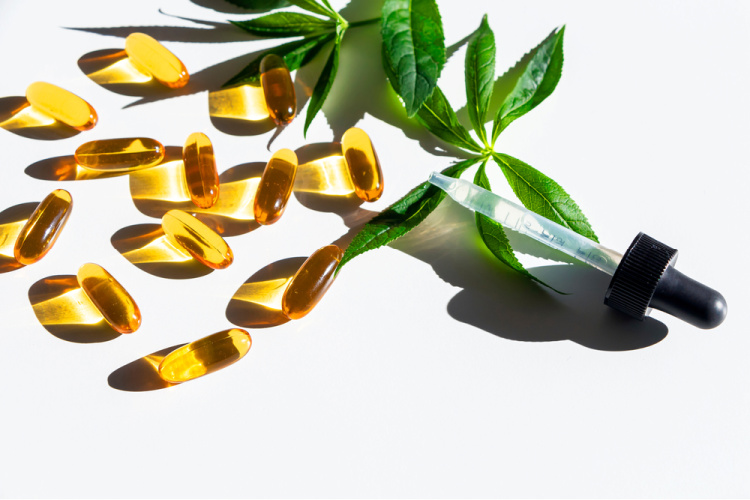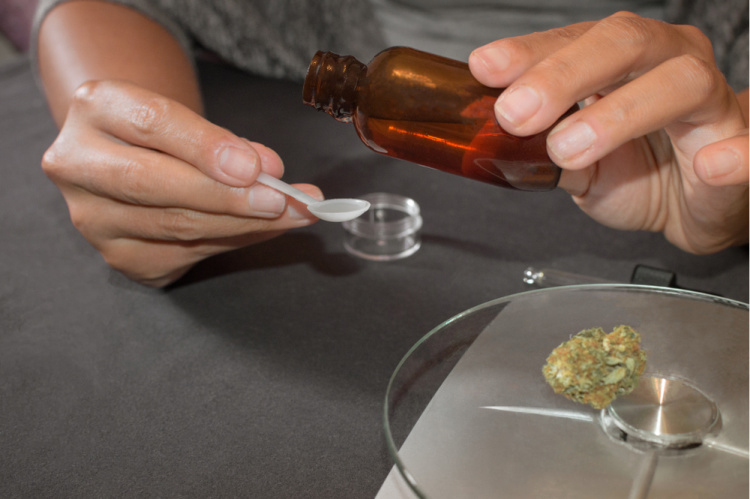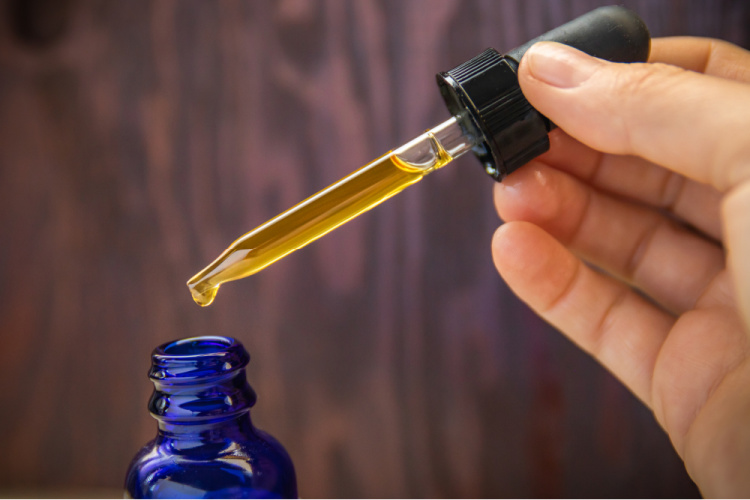How things have changed in the world of cannabis! During the many decades when marijuana was Public Enemy #1, the trend among underground growers was towards cultivating cannabis with the maximum potency so as to achieve the maximum high. But now a different trend is emerging, one with broad implications for the future of cannabis. Increasingly, people who use cannabis want to feel less high, or even not high at all!
Welcome to the world of microdosing cannabis.

What Is Microdosing? Exploring the Subtler Side of Cannabis
What is microdosing? In the broadest sense, it’s working with very minute quantities of cannabinoids to achieve beneficial effects without the subjective high.
Of course, to avoid the intoxicating effects of THC you can always turn to high-CBD cannabis products, and we stock a large number of high-CBD (or CBD-only) products at Green Goods dispensaries,
But another intriguing approach is to try microdosing: Taking such a minute amount of cannabis that the effects of THC remain imperceptible or barely perceptible.
How—and why—should you try microdosing marijuana? In this post, we’ll share everything we know about microdosing THC, and why it might just provide the subtle relief you didn’t know you needed!
Simply put, microdosing cannabis—or any medicine, for that matter—means taking a dose so low that you’re not aware of its effects on a conscious level. But that’s not to say “nothing’s happening.” Could microdosing cannabis be more useful than taking a “standard” dose? Let’s look at three conditions people often use cannabis for: pain management, better sleep, and the reduction of stress and anxiety.
Microdosing THC for Pain
Let’s start with the topic of pain control. When we’re trying to get a handle on physical discomfort, the assumption is that the more pain medication we take, the more our pain will be diminished.
However, that’s not always the case. Taking a larger-than-recommended dose of opioids, for instance—especially over time— can actually make pain worse. And speaking of opioids, many people find that the negative side effects—grogginess, nausea, sedation, and even dependency—greatly outweigh the positives.

While a number of studies support the use of cannabis for pain, there’s an interesting wrinkle. As we’ve explored previously, cannabis is unique in that it exhibits what’s called a “biphasic” effect. In other words, most of us—statistically about 90% of the population—derive greater medical benefit from cannabis when we use lower dosages. The higher the dose, the greater the chance of negative side effects such as dry mouth, anxiety or paranoia.
If we reduce the amount of the dose enough—typically below 5 mg or even 2.5 mg, we’re getting into microdosing territory. And as a 2020 study on the efficacy of selective dose inhalers found, a small dose of just 1 mg of THC delivered through an inhaler provided significant pain relief in comparison to a placebo.
Microdosing Cannabis as a Sleep Aid
Insomnia—the inability to fall (or stay) asleep—is the second most common reason patients request medical marijuana, and it’s generally accepted as a gentle and safe remedy. That said, there’s one common issue: Sometimes, taking even moderate doses of cannabis at bedtime can lead to grogginess or cloudiness the next morning.
Is THC good for sleep? It appears that in general—and especially when used over the long haul— large doses of it are not. That said, while there are no published sleep studies focused specifically on the effects of microdosing cannabis, the current research cautiously supports the notion that low doses of THC can help us get to sleep more quickly. This supports the anecdotal evidence suggesting that many people find that microdosing gives them all the soothing relief of a full-strength dose.
Microdosing Cannabis for Anxiety
One of the most potentially beneficial qualities of cannabis is in helping to reduce stress and anxiety. There’s considerable controversy as to whether THC helps moderate anxiety or if it may, in fact, exacerbate it. As with sleep, it appears that no matter what, large doses of THC aren’t particularly good for reducing anxiety, and may even spur paranoia in extreme cases.
What about microdosing THC instead? One 2014 study found that a synthetic cannabinoid was effective in managing PTSD, a condition that shares many common characteristics with anxiety. Specifically, it appears that using a low dose was an important factor in patients’ ultimate success. As a side note, the research showed that the individuals in the study experienced significant improvements in PTSD-related symptoms, including insomnia, nightmares, and chronic pain.
How To Microdose THC
One potential issue with microdosing cannabis is ensuring that users know how to take the lowest possible dose. Even a small puff from a vape pen might be too strong to qualify as a microdose, though with some practice it can be done.
That’s one reason we typically recommend working with a cannabis tincture or oil. This liquid format is pure, reasonably fast-acting, and, most importantly, can be consumed in carefully measured and consistent doses.

How much is the right amount? At least to begin with, a good target is roughly 2.5 milligrams of cannabinoids per dose.
We also recommend that when you’re experimenting with microdosing, you cease any “regular” cannabis use. The idea is to use the smallest medically useful dose possible, and cannabinoids can stick around in our systems for up to several weeks, it’s best to start with a clean slate.
Microdosing THC: Get Started with Green Goods Today!
With all the potential upsides of microdosing cannabis, it’s no wonder so many people are expressing interest in microdose (or low-dose) cannabis products. Are you interested in trying microdosing for yourself? Find your nearest Green Goods and start your journey today!
And if you have further questions about microdosing marijuana (or any other cannabis topics) Just ask; we’re always here to help
